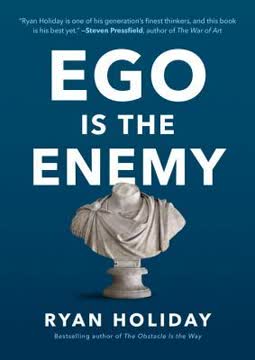முக்கியமான எடுத்துக்காட்டுகள்
1. எதிர்ப்புகளை மீறுவதற்கான குறியீட்டு கலை
"குறியீட்டு சிந்தனை, மக்கள் தாங்கள் உருவாக்கியவற்றை மட்டுமே கேட்கும் போல் தோன்றுவதால், உங்கள் எதிர்ப்புகளை மீற உதவுகிறது."
சூட்சுமமான பரிந்துரை சக்திவாய்ந்தது. குறியீட்டு சிந்தனை மூலம், நீங்கள் மக்கள் மனதில் யோசனைகளை விதைக்கலாம், அவர்களின் பாதுகாப்புகளை தூண்டாமல். நேரடியாக பரிந்துரை செய்வதற்குப் பதிலாக, நீங்கள் குறியீட்டு முறையில் பரிந்துரை செய்வதன் மூலம், குறியீட்டின் இலக்கு அந்த யோசனைகள் தங்களுடையவை என நம்புவதை அனுமதிக்கிறீர்கள், இதனால் அவர்கள் அதிகமாக ஏற்றுக்கொள்கிறார்கள். இந்த நுட்பம் அடிப்படையில்:
- சாதாரண உரையாடலின் போது சூட்சுமமான குறியீடுகளை விடுதல்
- பல்வேறு வழிகளில் விளக்கப்படக்கூடிய அம்பிக மொழியைப் பயன்படுத்துதல்
- மறைமுகமான கருத்துகள் அல்லது சின்னங்கள் மூலம் மறைந்த அர்த்தங்களை வெளிப்படுத்துதல்
- மௌனம் மற்றும் இடைவெளிகள் பேசுவதற்கு வாய்ப்பு அளித்தல்
நேரம் முக்கியம். மிகச் சிறந்த குறியீட்டுகள், இலக்கு சாந்தியோடு அல்லது கவனமின்மையோடு இருக்கும் போது செய்யப்படுகின்றன. சமூக சந்திப்புகள், நண்பர்களுடன் உரையாடல்கள் மற்றும் பகிர்ந்துகொள்ளும் செயல்கள், பரிந்துரைகளை மறைந்த முறையில் சேர்க்க சிறந்த வாய்ப்புகளை வழங்குகின்றன.
2. கவலை மற்றும் அசந்தோசத்தை தூண்டி தேவையை உருவாக்குங்கள்
"கவலை, குறைபாடு மற்றும் தேவையின் உணர்வு, அனைத்து ஆசைகளின் முன்னணி."
உள்ளார்ந்த வெறிச்சோலைப் பயன்படுத்துங்கள். பெரும்பாலான மக்கள் அடிப்படையில் உள்ள insegurities மற்றும் நிறைவேற்றப்படாத ஆசைகளை கொண்டுள்ளனர். அவர்கள் என்ன இழக்கிறார்கள் என்பதை நுட்பமாக நினைவூட்டுவதன் மூலம் அல்லது அவர்களின் தற்போதைய நிலைமையைப் பற்றி கவலை தூண்டுவதன் மூலம், நீங்கள் ஒரு தேவையை உருவாக்குகிறீர்கள், அதை நீங்கள் நிரப்பலாம். நுட்பங்கள்:
- தவறிய வாய்ப்புகள் அல்லது நிறைவேற்றப்படாத திறமைகளை குறிக்கிறேன்
- இலக்கை மற்றவர்களுடன் ஒப்பிடுவதில் எதிர்மறையாக காட்டுதல்
- அவர்கள் விட்டுவிட்ட கடந்த கால இலக்குகளை நினைவூட்டுதல்
- அவர்களின் தற்போதைய வாழ்க்கை சுவாரஸ்யம் அல்லது அர்த்தமின்மையைக் கொண்டுள்ளது எனக் கூறுதல்
தீர்வை வழங்குங்கள். நீங்கள் அசந்தோசத்தை எழுப்பிய பிறகு, உங்கள் புதிய தேவைகளை நிறைவேற்றுவதற்கான பதிலாக உங்களை நிலைநிறுத்துங்கள். இதனால் இலக்கு உங்களை தங்கள் மீட்பாளராகக் காணும், நீங்கள் வழங்கும் அனைத்தையும் ஆர்வமாக ஏற்றுக்கொள்கிறார்கள்.
3. உங்கள் மதிப்பை அதிகரிக்க விருப்பத்தின் பொருளாக தோன்றுங்கள்
"மற்றவர்கள் விரும்பும்தை நாம் விரும்புகிறோம்."
விருப்பத்தின் கதிரை உருவாக்குங்கள். மக்கள் மற்றவர்கள் ஈர்க்கும் விஷயங்களுக்கு இயல்பாக ஈர்க்கப்படுகிறார்கள். நீங்கள் பிரபலமாகவும், தேடப்படும் ஒருவராகவும் தோன்றுவதன் மூலம், உங்கள் மதிப்பை அதிகரிக்கிறீர்கள் மற்றும் மேலும் ஈர்க்கக்கூடியவராக மாறுகிறீர்கள். உத்திகள்:
- உங்கள் சுற்றுப்புறத்தில் பாராட்டுபவர்களை வைத்திருத்தல்
- கடந்த கால வெற்றிகள் அல்லது உறவுகளை குறிக்கிறேன்
- போட்டி அல்லது விருப்பத்தின் மூன்று கோணங்களை உருவாக்குதல்
- மர்மம் மற்றும் அணுகலுக்கு அற்ற தன்மையை பராமரித்தல்
சமூக ஆதாரத்தைப் பயன்படுத்துங்கள். மற்றவர்கள் உங்களை விரும்பும் போது, அது உங்கள் இலக்கில் போட்டி உணர்வை தூண்டுகிறது. அவர்கள் மற்றவர்கள் விரும்பும்தைப் பெற விரும்புவார்கள், இதனால் உங்கள் ஈர்ப்பு எளிதாகிறது.
4. ஆர்வம் மற்றும் கவர்ச்சியை உருவாக்க மாறுபட்ட சிக்னல்களை அனுப்புங்கள்
"குணங்களின் கலவையால் ஆழம் குறிக்கப்படுகிறது, இது குழப்பத்தை உருவாக்கும் போதிலும் கவர்ச்சியாக இருக்கிறது."
ஒரு பரபரப்பாக இருங்கள். மனிதர்கள் எளிதில் வகைப்படுத்த முடியாதவற்றிற்கு ஈர்க்கப்படுகிறார்கள். நீங்கள் தெளிவாக மாறுபட்ட குணங்களை வெளிப்படுத்துவதன் மூலம், நீங்கள் மற்றவர்கள் தீர்க்க விரும்பும் ஒரு சிக்கலாக மாறுகிறீர்கள். எடுத்துக்காட்டுகள்:
- கடுமையை மென்மையுடன் இணைத்தல்
- தூய்மையை செந்தமிழுடன் கலந்துகொள்ளுதல்
- அறிவை திடீர் செயலுடன் சமநிலைப்படுத்துதல்
- சூடான ஈடுபாடு மற்றும் குளிர்ந்த தொலைவுக்கு இடையே மாறுதல்
அவர்கள் யோசிக்க வைத்திருங்கள். முக்கியம், நீங்கள் முழுமையாக கணிக்க முடியாதவராக இருக்க வேண்டும். உங்கள் இலக்கு உங்களைப் பற்றி யோசிக்கிறார்கள் என்று நினைக்கும் போது, அவர்களை ஆச்சரியப்படுத்தும் உங்கள் தன்மையின் புதிய அம்சத்தை வெளிப்படுத்துங்கள்.
5. வெற்றிகரமான ஈர்ப்புக்கான சரியான இலக்கை தேர்ந்தெடுக்கவும்
"சரியான இலக்கு, உங்களை ஈர்க்கும் சில இயல்புகளை கொண்டுள்ளது."
இலக்கு தேர்வு முக்கியம். அனைவரும் ஈர்ப்புக்கு சமமாக உள்ளனர். நீங்கள் தேட வேண்டியவர்கள்:
- வாழ்க்கையில் மாற்றம் அல்லது பாதிப்பை அனுபவிக்கிறவர்கள்
- நீங்கள் பயன்படுத்தக்கூடிய நிறைவேற்றப்படாத தேவைகள் அல்லது ஆசைகள் உள்ளவர்கள்
- உண்மையாகவே உங்களை ஈர்க்கும் குணங்களை கொண்டவர்கள்
- அவர்களின் தற்போதைய நிலைமையில் சோர்வு அல்லது திருப்தி குறைவாக உள்ளவர்கள்
தவறான இலக்குகளை தவிர்க்கவும். மிகவும் திருப்தியுடன் அல்லது தன்னம்பிக்கையுடன் உள்ளவர்களைத் தவிர்க்கவும்.
- மிகுந்த நம்பிக்கையோடு அல்லது சிந்தனையோடு உள்ளவர்கள்
- மிகுந்த சினம் அல்லது சோம்பல் கொண்டவர்கள்
- உணர்ச்சியாக கிடைக்காதவர்கள் அல்லது மூடப்பட்டவர்கள்
உங்கள் உண்மையான ஆர்வம், உங்கள் ஈர்ப்புப் முயற்சிகளை ஊக்குவிக்கும், அவற்றை மேலும் நம்பகமான மற்றும் பயனுள்ளவையாக மாற்றும்.
6. மறைமுக அணுகுமுறையால் தவறான பாதுகாப்பு உணர்வை உருவாக்குங்கள்
"முதலில், உங்கள் நடத்தை மூலம் ஈர்ப்பாளரின் எந்தவொரு அம்சமும் இருக்கக்கூடாது."
நண்பத்துவத்தின் மூலம் ஆயுதமீட்டுங்கள். உங்கள் இலக்கை மறைமுகமாக அணுகுங்கள், முதலில் ஒரு அச்சுறுத்தாத உறவையை நிறுவுவதன் மூலம். இது அவர்களின் பாதுகாப்புகளை குறைக்கிறது மற்றும் அவர்களின் ஆசைகள் மற்றும் பலவீனங்கள் பற்றிய மதிப்புமிக்க தகவல்களைப் பெற அனுமதிக்கிறது. உத்திகள்:
- உங்கள் தன்னை நண்பராக அல்லது நம்பிக்கையாளர் ஆகக் காட்டுங்கள்
- அவர்களின் வாழ்க்கை மற்றும் யோசனைகளில் உண்மையான ஆர்வத்தை காட்டுங்கள்
- எதிர்பார்ப்பின்றி ஆதரவு அல்லது உதவியை வழங்குங்கள்
- பகிர்ந்த அனுபவங்களின் மூலம் மெதுவாக நெருக்கத்தை அதிகரிக்கவும்
காத்திருப்பு முக்கியம். உறவையை இயற்கையாக வளர்க்க அனுமதிக்கவும், இலக்கு அளிக்க தயாராக உள்ளதைவிட அதிகமாக விரும்பாதீர்கள். இது நம்பிக்கையை உருவாக்குகிறது மற்றும் உங்கள் இறுதியில் ஈர்ப்பு, திட்டமிடப்பட்ட திட்டமாக அல்ல, இயற்கையான முன்னேற்றமாக தோன்றுகிறது.
7. அவர்களின் மனதில் நுழைந்து பாதுகாப்புகளை குறைத்து நம்பிக்கையைப் பெறுங்கள்
"அவர்களின் விதிகளின்படி விளையாடுங்கள், அவர்கள் விரும்பும் விஷயங்களை அனுபவிக்கவும், அவர்களின் மனநிலைக்கு ஏற்ப மாறுங்கள்."
அவர்களின் கண்ணாடியாக மாறுங்கள். மக்கள் இயல்பாக நர்சிசிஸ்டிக் ஆக இருக்கிறார்கள் மற்றும் தங்களின் குணங்களை பிரதிபலிக்கும் நபர்களுக்கு ஈர்க்கப்படுகிறார்கள். உங்கள் இலக்கின் தன்மையை, ஆர்வங்களை மற்றும் மதிப்புகளைப் பின்பற்றுவதன் மூலம், நீங்கள் ஒரு சக்திவாய்ந்த தொடர்பை உருவாக்குகிறீர்கள். இது அடிப்படையில்:
- அவர்களின் தொடர்பு முறை மற்றும் உடல் மொழியைப் பின்பற்றுதல்
- அவர்களின் ஆர்வங்களைப் பகிர்ந்து, அவர்களின் பொழுதுபோக்குகளில் ஈடுபடுதல்
- அவர்களின் உலகநோக்குகளை மற்றும் கருத்துக்களை உறுதிப்படுத்துதல்
- அவர்களின் உணர்ச்சி நிலை மற்றும் ஆற்றல் அளவுக்கு ஏற்ப மாறுதல்
மெதுவான தாக்கம். நீங்கள் முழுமையாக அவர்களின் மனதில் நுழைந்து, அவர்களின் நம்பிக்கையைப் பெற்ற பிறகு, நீங்கள் நுட்பமாக அவர்களின் யோசனைகள் மற்றும் ஆசைகளை வடிவமைக்கத் தொடங்கலாம். இது, நீங்கள் அவர்களை உங்கள் ஈர்ப்பில் இழுத்துச் செல்ல அனுமதிக்கிறது, அவர்கள் தங்களை கட்டுப்படுத்தப்பட்ட அல்லது அழுத்தப்பட்டதாக உணராமல்.
கடைசியாக புதுப்பிக்கப்பட்டது:
FAQ
What's The Art of Seduction by Robert Greene about?
- Exploration of Seduction: The book delves into the psychology of seduction, presenting it as a powerful form of influence and control. It synthesizes historical examples and literary references to illustrate timeless strategies.
- Character Archetypes: Greene identifies ten archetypal seducers, such as the Siren and the Rake, each embodying different seductive qualities. These serve as models for understanding attraction and manipulation.
- Seductive Maneuvers: The book outlines twenty-four specific maneuvers for seducing others, emphasizing patience, strategy, and emotional manipulation.
Why should I read The Art of Seduction by Robert Greene?
- Understanding Human Nature: The book provides insights into human desires and motivations, revealing how seduction operates on both conscious and unconscious levels.
- Practical Strategies: Greene offers advice applicable in various social situations, enhancing persuasive abilities and social skills in both romantic and professional contexts.
- Historical Context: Rich with historical anecdotes, the book connects timeless principles of seduction to contemporary life, making it relevant for modern readers.
What are the key takeaways of The Art of Seduction by Robert Greene?
- Power of Seduction: Seduction is portrayed as a subtle and effective form of power that can be wielded by anyone to gain influence in relationships.
- Emotional Manipulation: Creating feelings of desire, insecurity, and excitement is crucial for successful seduction, with an emphasis on insinuation and suspense.
- Self-Awareness: Greene stresses the need for self-awareness, encouraging readers to identify their seductive qualities and adapt their approach based on the target's desires.
What are the best quotes from The Art of Seduction by Robert Greene and what do they mean?
- "Seduction is the most subtle, elusive, and effective form of power.": This quote suggests that seduction operates beneath overt power dynamics, allowing influence without force.
- "The ability to delay satisfaction is the ultimate art of seduction.": It highlights the Coquette's strategy of creating desire through absence, intensifying longing.
- "Charm is seduction without sex.": Greene distinguishes charm from sexual seduction, indicating its effectiveness in creating attraction in social and professional contexts.
How does Robert Greene define seduction in The Art of Seduction?
- Seduction as Power: Greene defines it as a subtle, indirect form of power, contrasting with overt control, to achieve desires without confrontation.
- Psychological Manipulation: Seduction involves playing on emotions and desires through charm, attention, and emotional resonance.
- Art and Strategy: It is presented as both an art and a strategy, requiring careful planning and execution, akin to a game mastered with practice.
What are the different types of seducers described in The Art of Seduction by Robert Greene?
- The Siren: Uses allure and sensuality to captivate, embodying femininity and mystery.
- The Rake: Characterized by intense passion and desire, creating excitement and danger.
- The Coquette: Plays hard to get, using warmth and aloofness to heighten desire.
What are the phases of seduction outlined in The Art of Seduction by Robert Greene?
- Phase One: Create Temptation: Awaken desire by hinting at pleasures to come, stimulating curiosity.
- Phase Two: Lead Astray: Keep the target emotionally engaged and confused, creating unpredictability.
- Phase Three: The Precipice: Deepen emotional connection through extreme measures, solidifying the bond.
How can I apply the concepts from The Art of Seduction by Robert Greene in my life?
- Self-Reflection: Identify and enhance your seductive qualities to navigate social interactions effectively.
- Practice Emotional Manipulation: Use strategies to create emotional responses, making others feel special or desired.
- Adapt to Your Audience: Tailor your approach based on individual needs and desires, adjusting behavior to resonate.
What role does absence play in the strategies outlined in The Art of Seduction by Robert Greene?
- Creating Tension: Absence creates tension and longing, making the target yearn for the seducer's return.
- Psychological Manipulation: Induces insecurity and anxiety, prompting the target to pursue more aggressively.
- Reinforcing Desire: Absence reinforces desirability, leading to a more intense emotional connection upon reunion.
How does The Art of Seduction by Robert Greene address the concept of emotional highs and lows?
- Emotional Rollercoaster: Creating highs and lows keeps the target engaged and invested in the relationship.
- Intensity of Experience: Fluctuations intensify the experience, making the climax more rewarding.
- Dependency Creation: Alternating pleasure and pain fosters dependency, strengthening the bond.
What are some common pitfalls to avoid in seduction as outlined in The Art of Seduction by Robert Greene?
- Overexposure: Avoid becoming too familiar or predictable, maintaining mystery and intrigue.
- Neglecting Emotional Dynamics: Manage emotional highs and lows to maintain intensity in the relationship.
- Being Too Nice: Avoid being overly accommodating, as boldness and assertiveness are key to seduction.
How can one maintain the seductive atmosphere after the initial seduction according to The Art of Seduction by Robert Greene?
- Continuous Re-seduction: Introduce new experiences and surprises to prevent familiarity from dulling the relationship.
- Injecting Drama: Create tension or conflict to reignite the initial spark and keep the relationship dynamic.
- Avoiding Complacency: Engage the target's emotions and desires continually to preserve and enhance the seductive atmosphere.
விமர்சனங்கள்
மயக்கத்தின் கலை என்ற புத்தகம் மாறுபட்ட விமர்சனங்களைப் பெறுகிறது; சிலர் இதன் வரலாற்று கதைப்பாடுகள் மற்றும் மனவியல் உள்ளடக்கங்களை பாராட்டுகிறார்கள், மற்றவர்கள் இதன் கவர்ச்சி உத்திகளை விமர்சிக்கிறார்கள். வாசகர்கள், காதல் உறவுகளைத் தவிர, மயக்க உத்திகளின் விரிவான பகுப்பாய்வை மற்றும் அவற்றின் பயன்பாடுகளைப் பாராட்டுகிறார்கள். பலர் இதனை சுவாரஸ்யமாகவும், சிந்தனைக்குரியதாகவும் கருதுகிறார்கள், மனித நடத்தைப் புரிந்துகொள்ள உதவுகிறது எனக் கூறுகிறார்கள். இருப்பினும், விமர்சகர்கள் இந்த புத்தகம் ஒழுக்கமற்ற மயக்கம் மற்றும் பொருளாக்கத்தை ஊக்குவிக்கிறது என வாதிக்கிறார்கள். சில வாசகர்கள் புத்தகத்தின் நீளத்துடன் மற்றும் மீண்டும் மீண்டும் வரும் உள்ளடக்கத்துடன் போராடுகிறார்கள், மற்றவர்கள் இதனை தனிப்பட்ட வளர்ச்சி மற்றும் சமூக உறவுகளுக்கான மதிப்புமிக்க ஆதாரமாகக் கருதுகிறார்கள்.
Similar Books























